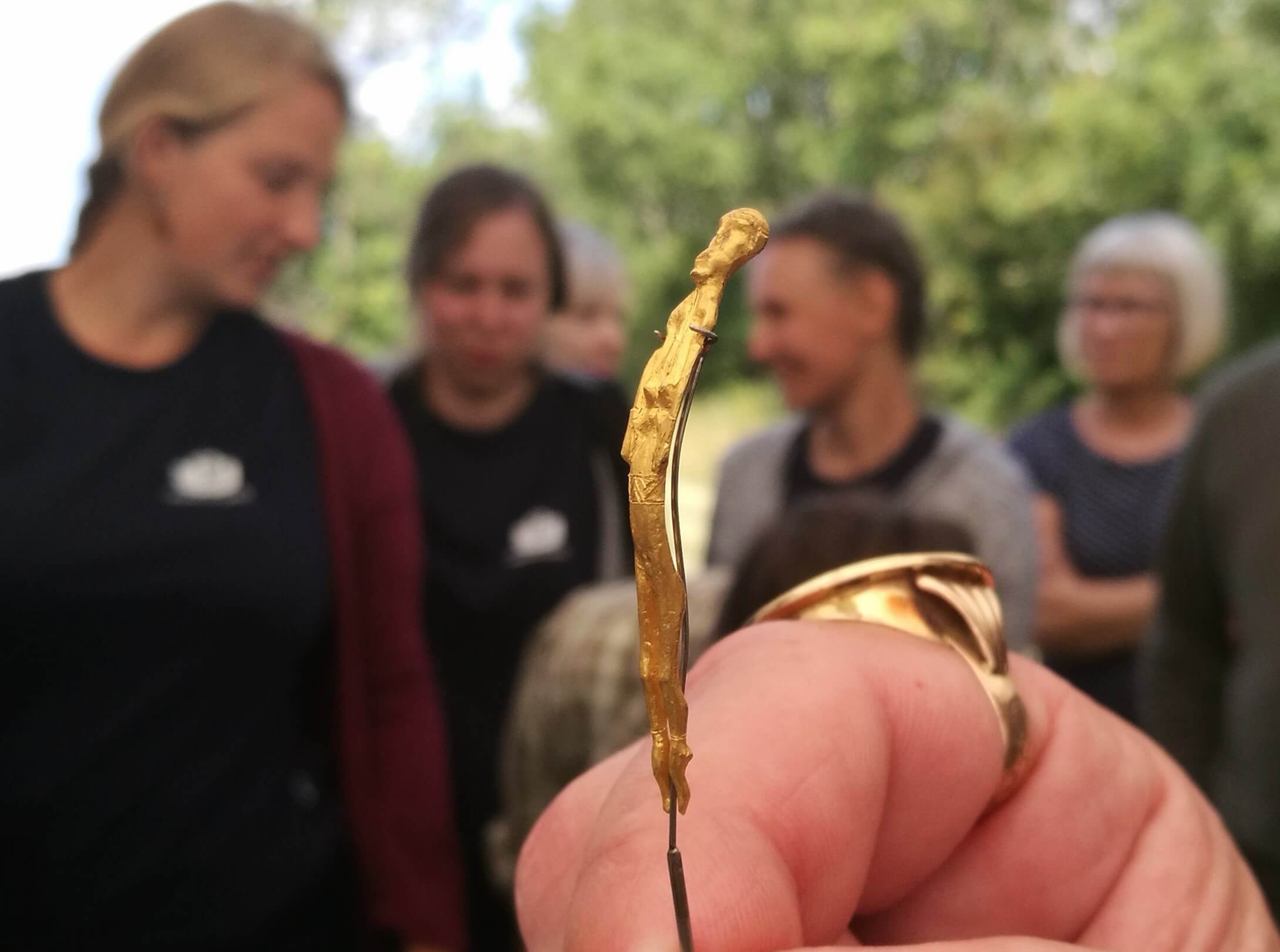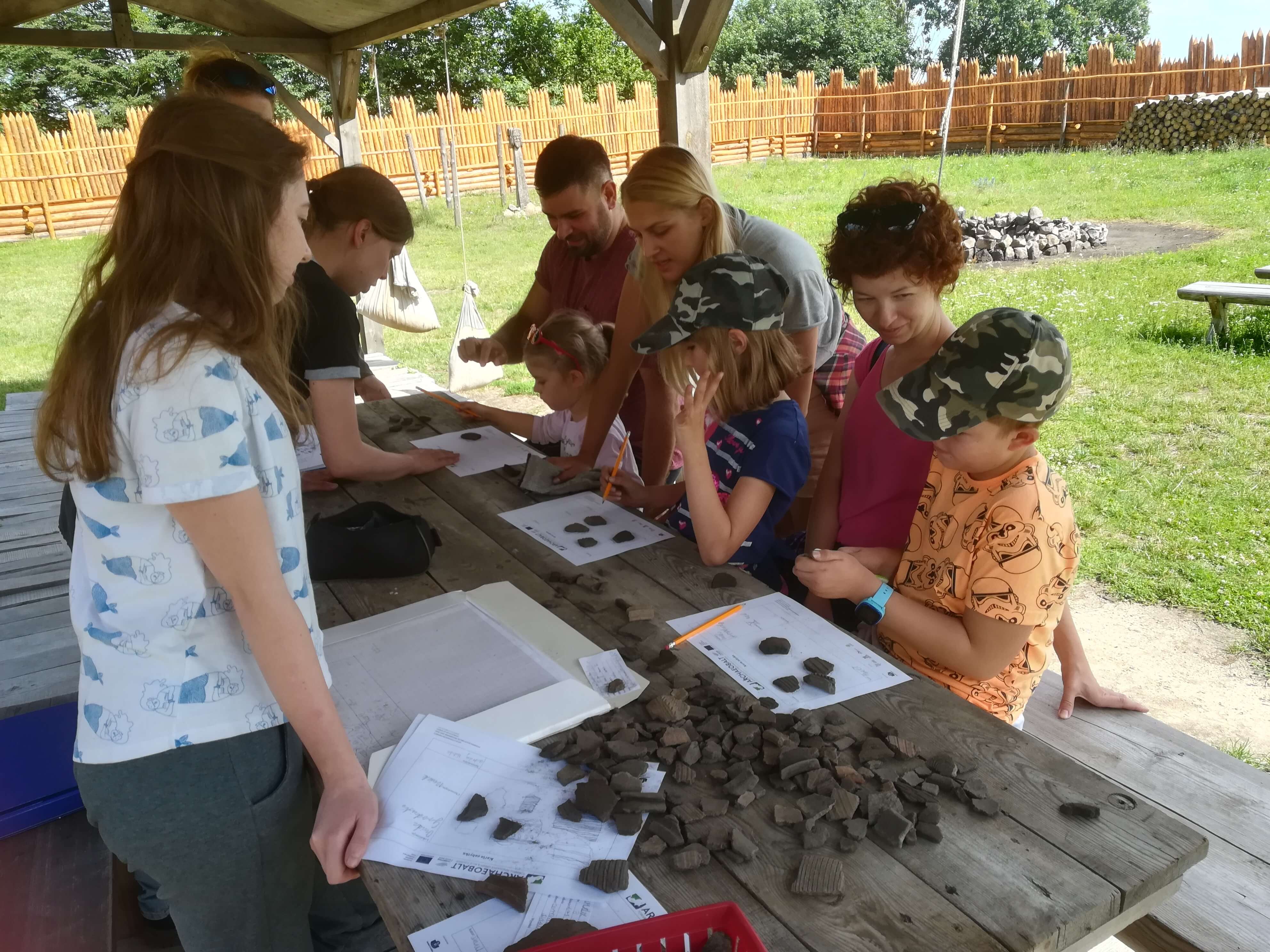
Smørenge/ The Gold Hole, Bornholm
Smørenge, also known as “the gold hole,” was first described in 1725 by Jacob von Melle, the owner of the fields near Smørenge where he had collected several smaller gold pieces. The discovered objects were supposed to be smelted but were fortunately preserved by von Melle. Since then, the area was more or less forgotten until 2009, when it was examined with metal detector enthusiasts who located several gold figurines.
The name Guldhullet does not appear on modern maps but is mentioned in the register of place names under Vestermarie parish as a possible find spot for ‘gold coins’. The named locality belonged to the farm Store Smørengegård. In addition to the gold finds, several beads, fibula and remains of swords, as well as bones and silver treasures, were found at Smørenge. The finds suggest what a significant place the Smørenge must have been to the surrounding population. The small gold figurines are also found on Sorte Muld near Svaneke, so a connection between these settlements is possible.
The chronological span of the finds shows some sort of sacrificial activities took place – at least during certain periods – over almost 1000 years. During the excavations, thanks to GPR surveys, four rows of parallel firepits that stretch for a distance of several hundred meters were discovered. Today’s water reservoir is a trace of a ritual spring into which sacrificial objects such as “guldgubber”, glass and crystal beads, animals bones were thrown, during the summer / winter solstice
From 2009 until the present date, the gold finds found at Guldhullet include small figurines made of solid gold, gold foil figures (guldgubber) including a small horse-shaped figure, bracteates as well as other pieces of gold. Based principally on the archaeological contexts at Sorte Muld and Uppåkra, as well as iconographic and stylistic details, the gold foil figures in South Scandinavia have been dated to the 6th and early 7th century AD.
Guldgubber are quite small figures or gold foil pieces with motifs that are either stamped or carved into the metal. Most of them illustrate men and women while some illustrate what looks like small “trolls” who are pictured with their heads located in their stomachs. These are believed to have been offered mythical creatures like trolls and demons, would not trouble or haunt the population at the settlement.
In some cases, the gold figures depict naked women, they may have had a different ritual meaning.
At Smørenge a small gold figurine depicting a woman was found. This female figurine seemed to have a her open, arched back with prominent “teeth” that can symbolize an open spine, which is associated with Norse mythology, especially related to elf women or water goddesses from ancient times. She is supposed to symbolize fertility and may have been sacrificed by someone at Smørenge in the hope of receiving blessings from the gods.
This special site may have maintained its ritual significance until the introduction of Christianity on the island in the 11th century. The sword sacrifices may well reflect the changes that took place in society from predominantly farming communities to a more military orientated society.
Maybe the gold pieces were disposed of, as the population converted to Christianity and therefore got rid of “pagan figures”?




